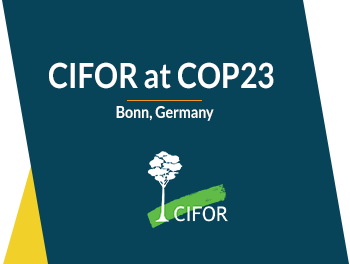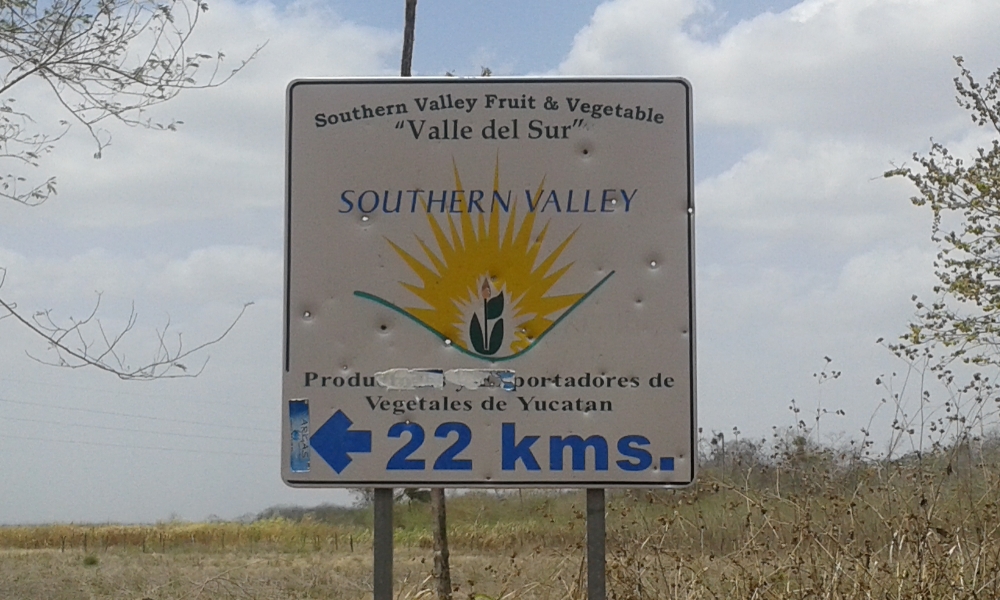
If programs for reducing greenhouse gas emissions from deforestation and forest degradation, or REDD+, are to succeed, changes in those emissions must be measured reliably.
Although that may seem a strictly technical task, it also requires local and national political efforts, according to a new paper published by the Center for International Forestry Research (CIFOR).
“People tend to think of MRV — short for measurement, reporting and verification — as something that will be in the hands of technical experts,” says Paulina Deschamps, co-author of the study. “MRV has an important technical component, but it is also part of a political process, so it poses both challenges and opportunities.”
The study focuses on MRV systems for REDD+ programs in Mexico.
“Mexico has been one of the world’s flagships on REDD+,” Deschamps says. “The country is taking an innovative approach based on sustainable landscapes. But there hasn’t been much study of how MRV is working at different levels.”
Mexico’s REDD+ process is led by the National Forestry Commission (CONAFOR), which has established Early Action Areas in the states of Chiapas, Jalisco, Campeche, Yucatan and Quintana Roo. Those five states accounted for 36 percent of emissions from the country’s forest sector from 2001 to 2011.
The country is part of the two main global REDD+ initiatives, the United Nations REDD+ program (UN-REDD) and the Forest Carbon Partnership Facility (FCPF), and receives international funding from other sources. Part of that funding is earmarked for establishing MRV systems.
But the CIFOR study, which focused on Chiapas and Yucatan, found that the views and expectations of local stakeholders often differed from those of national government agencies responsible for the country’s REDD+ efforts.
“In both states, there is a great deal of experience and capacity at the subnational level,” Deschamps says. “Civil society and academia are leading voluntary REDD+ forums, because they want to share information” — and they often feel the national government is not keeping pace, she adds.
RECONCILING DIFFERENT VIEWS
The study focuses on the relationships between REDD+ activities at the state and national levels. It is based on 45 interviews conducted between August and November 2016 with state and national government representatives, academics, representatives of non-governmental organizations, forest producers, REDD+ technical advisory committees and Yucatan’s Public Agent for Territorial Development.
The interviews reveal several major challenges for implementing MRV for REDD+, but also point to solutions, Deschamps says. Many have to do with clearly establishing institutional procedures for providing information and ensuring participation.
“We found an overall lack of understanding of MRV and its objectives, as well as of roles and responsibilities at the national and subnational levels,” Deschamps says. “Part of the problem is that there is not an official communications channel for CONAFOR to provide information about MRV, and to clarify roles and responsibilities.”
That could be done by officially recognizing existing subnational forums, such as the REDD+ Technical Advisory Councils, and the MRV Working Groups, which bring technical experts, academics and civil society representatives together to discuss issues, make proposals and take action.
Although the councils and working groups are informal and non-binding, “they have been great spaces for discussion of REDD+,” Deschamps says. “There’s no need to create new structures — those entities could just be formally recognized and promoted by CONAFOR.”
The interviews also show that national government officials and local stakeholders have different ideas about the purpose of MRV.
People at the subnational level want a better understanding of which systems work, and why, to help them make better policies
While national officials tend to see MRV systems solely as a means for monitoring greenhouse gas emissions, to ensure the country’s compliance with its international commitments, local stakeholders want the measurement systems to provide input for land-use and planning policies.
Although national government officials do not see the MRV system as primarily a tool for planning, “people at the subnational level want a better understanding of which systems work, and why, to help them make better policies,” she says.
The two views are not mutually exclusive, she says, but discussion is needed to bring them together.
PARTICIPATION IS KEY
Participatory forums like the technical councils could provide a way to integrate these views, Deschamps says.
More formal channels for participation and communication could also help resolve other key challenges, including sharing information about how monitoring should be carried out among national government officials and subnational stakeholders. That would also clarify the role of subnational actors.
“Subnational actors are interested in making significant contributions to the way MRV is being designed,” Deschamps says. “They don’t want their role to be limited to validating information from the national government. They also want to review objectives and play a more active role in planning.”
The main lesson from the study, she says, is that “it is important to institutionalize the MRV process.”
REDD+ has a long history in Mexico, but national agencies such as CONAFOR have been frustrated in implementation efforts because of budget cuts and staffing shortages.
Input from actors at multiple levels will be important to assuring ... transparency
“Many people were afraid that REDD+ might fade away in Mexico because there weren’t enough resources and it wasn’t getting enough government attention,” Deschamps says. “But our study found many actors who are very much aware of what is happening and who want the process to go forward.”
The main question now, she says, is how to ensure ongoing technical, financial and administrative support for REDD+ and MRV. That means continuing with participatory forums and ensuring that REDD+ and MRV become firmly established as institutional policy finds form.
“The Mexico case sheds important light on the challenges that are likely to emerge for other countries with regard to the Enhanced Transparency Framework established by the Paris Climate Accord,” says Anne Larson, CIFOR principal scientist and co-author of the study. “Input from actors at multiple levels will be important to assuring that transparency.”
This study is part of CIFOR’s Global Comparative Study on REDD+.
We want you to share Forests News content, which is licensed under Creative Commons Attribution-NonCommercial-ShareAlike 4.0 International (CC BY-NC-SA 4.0). This means you are free to redistribute our material for non-commercial purposes. All we ask is that you give Forests News appropriate credit and link to the original Forests News content, indicate if changes were made, and distribute your contributions under the same Creative Commons license. You must notify Forests News if you repost, reprint or reuse our materials by contacting forestsnews@cifor-icraf.org.


